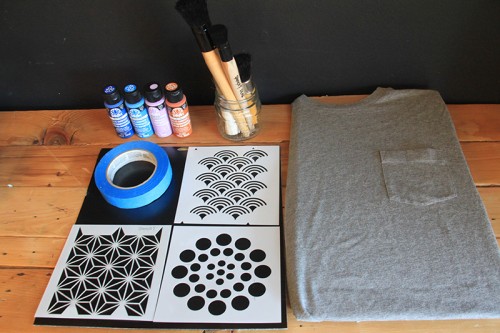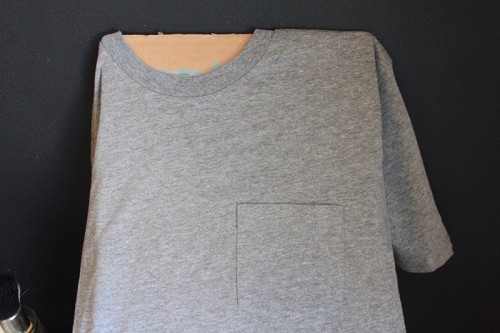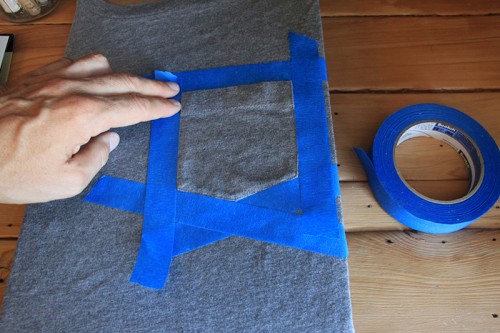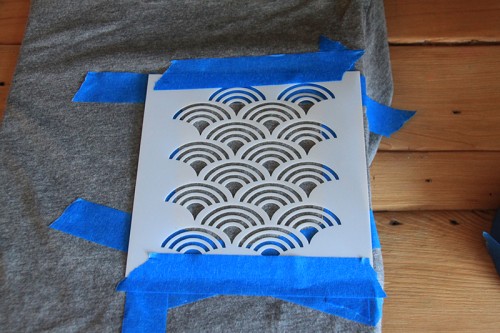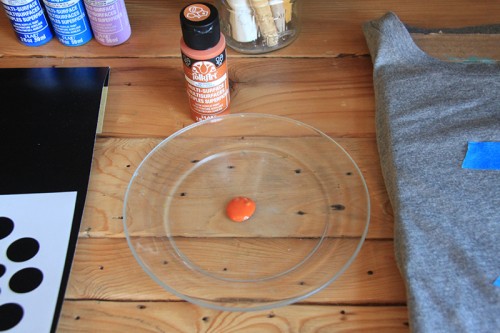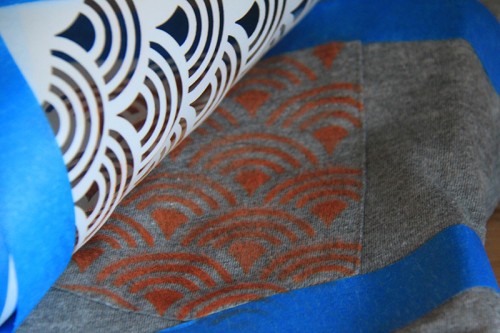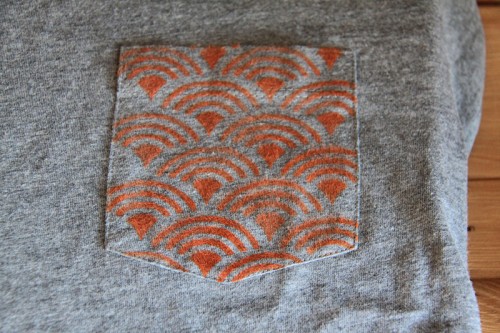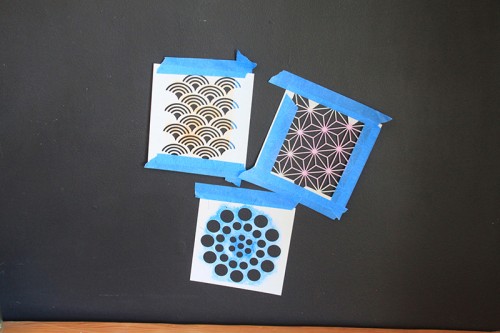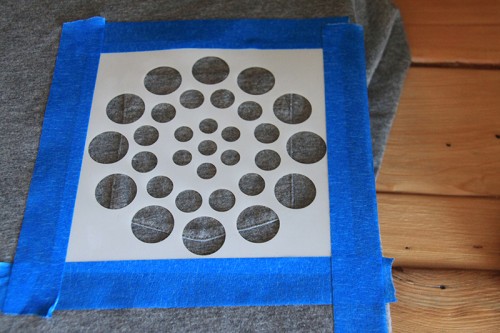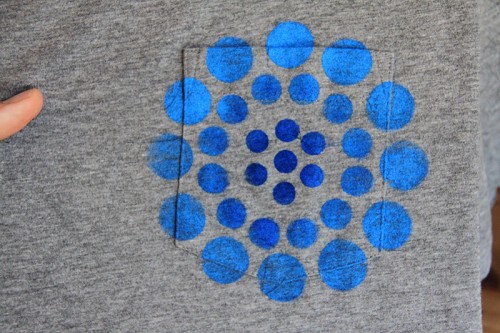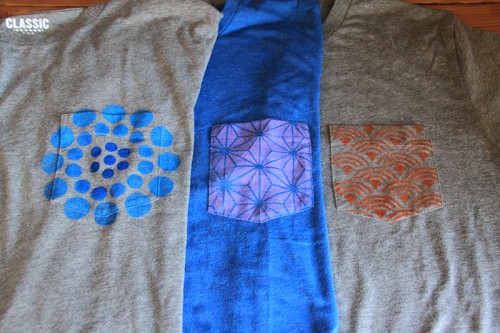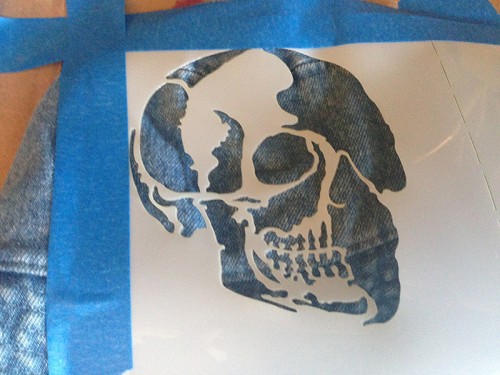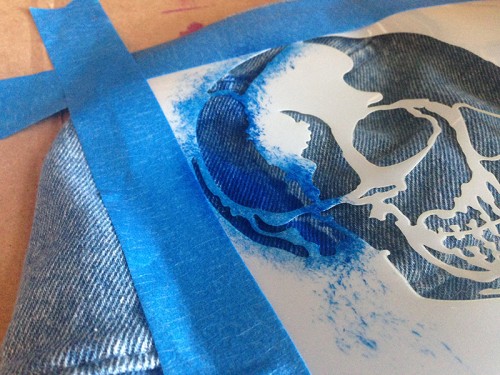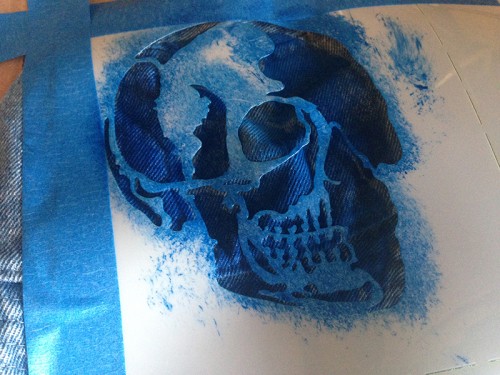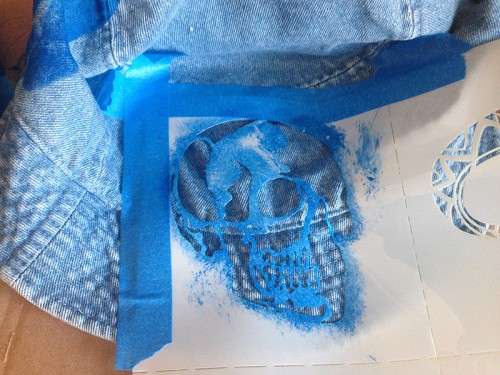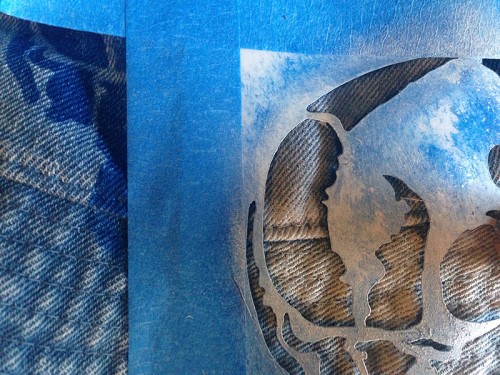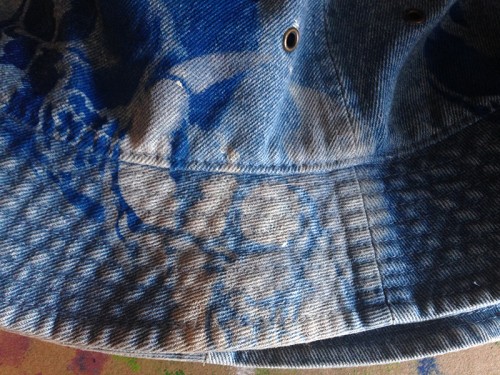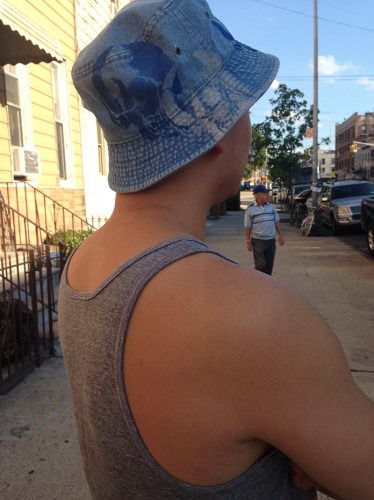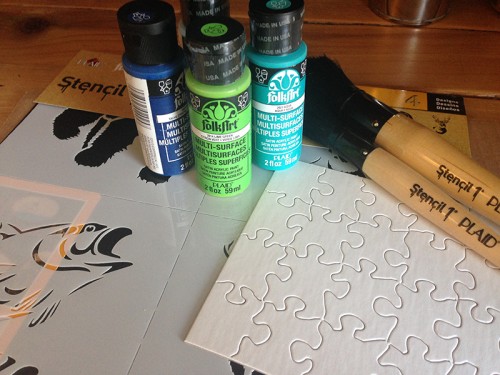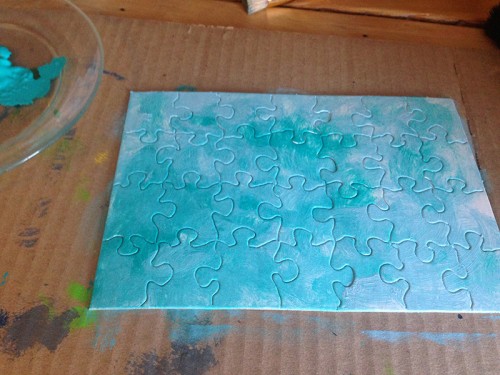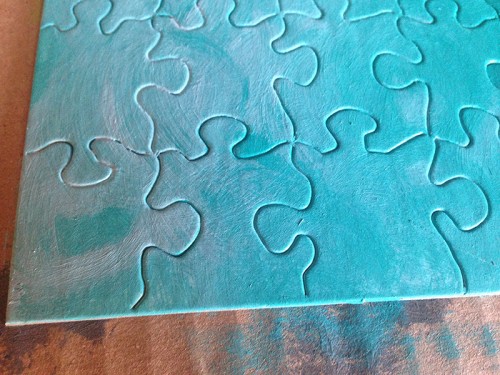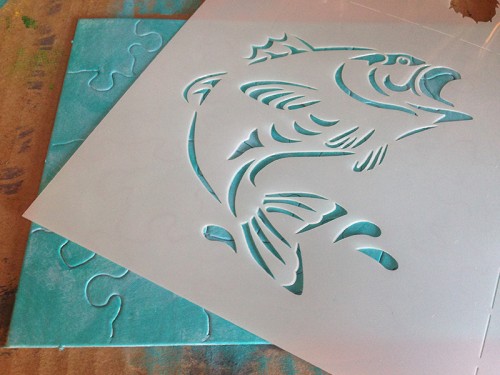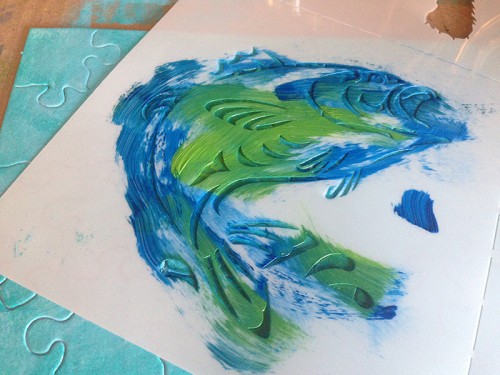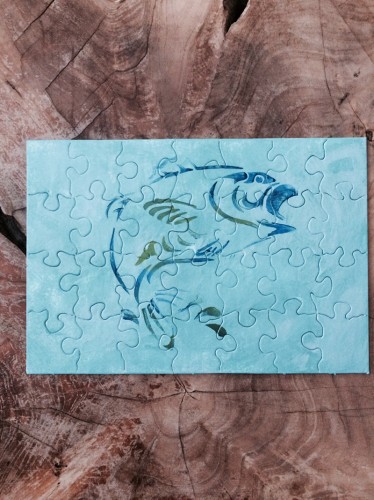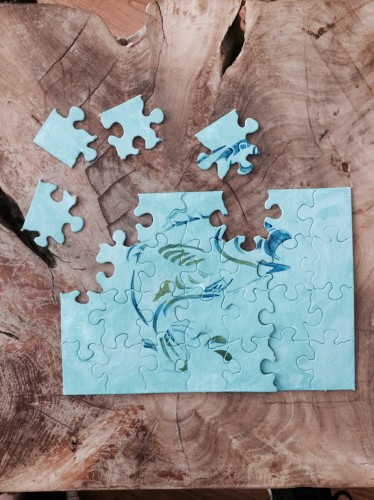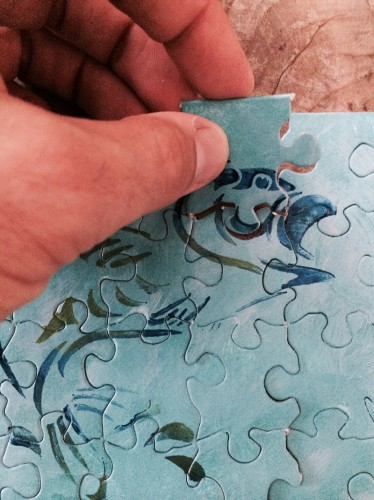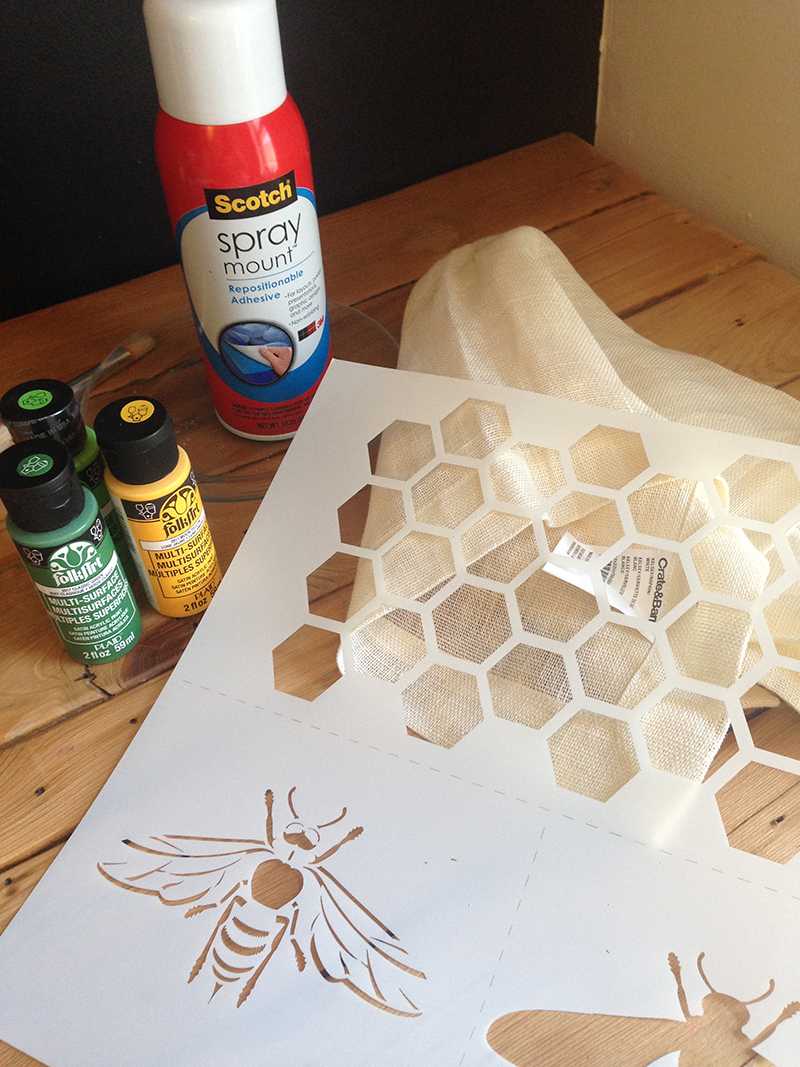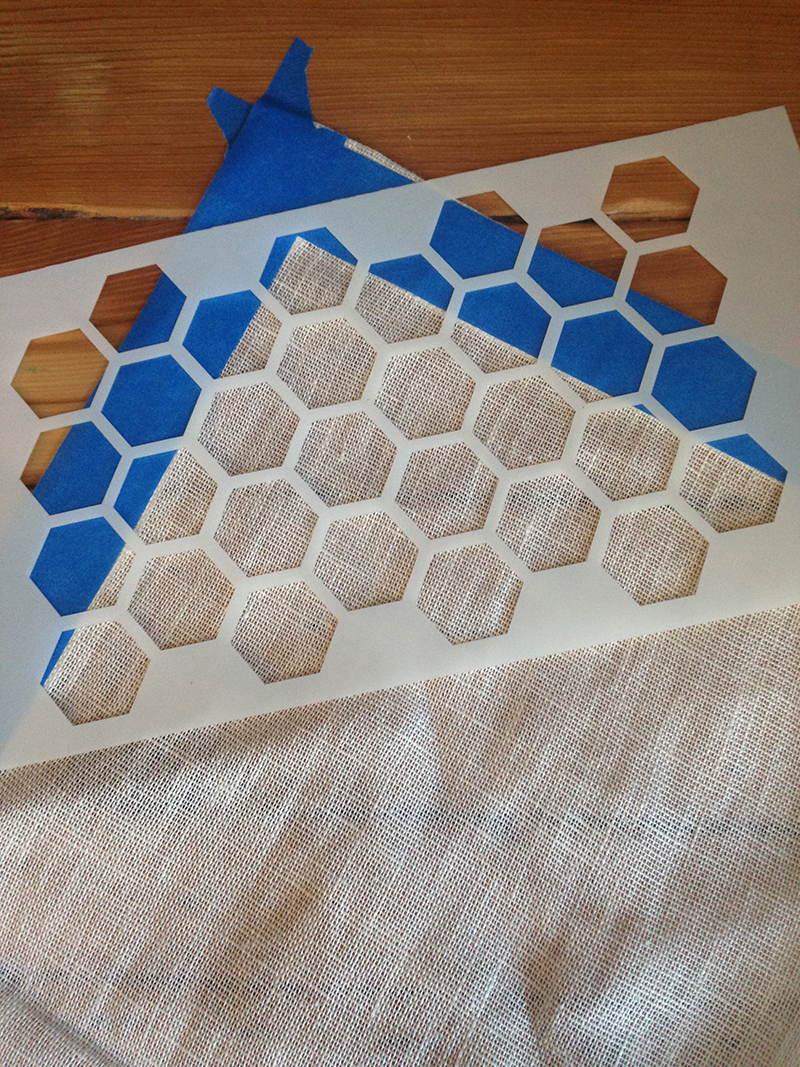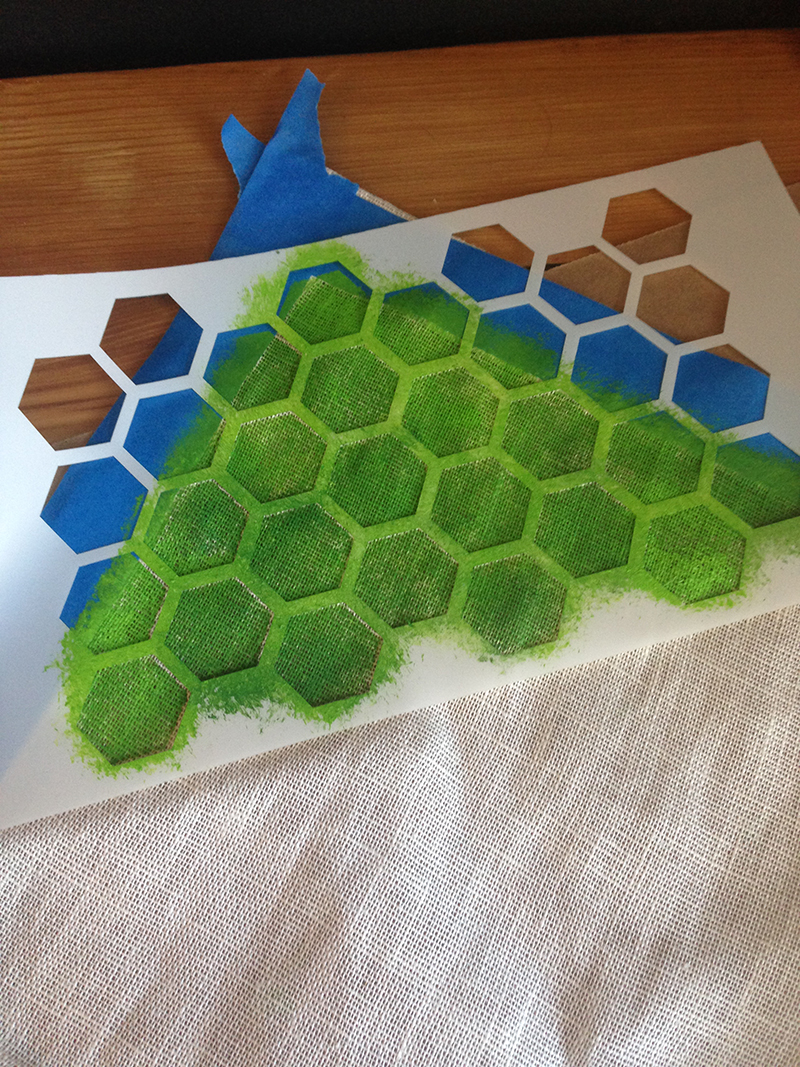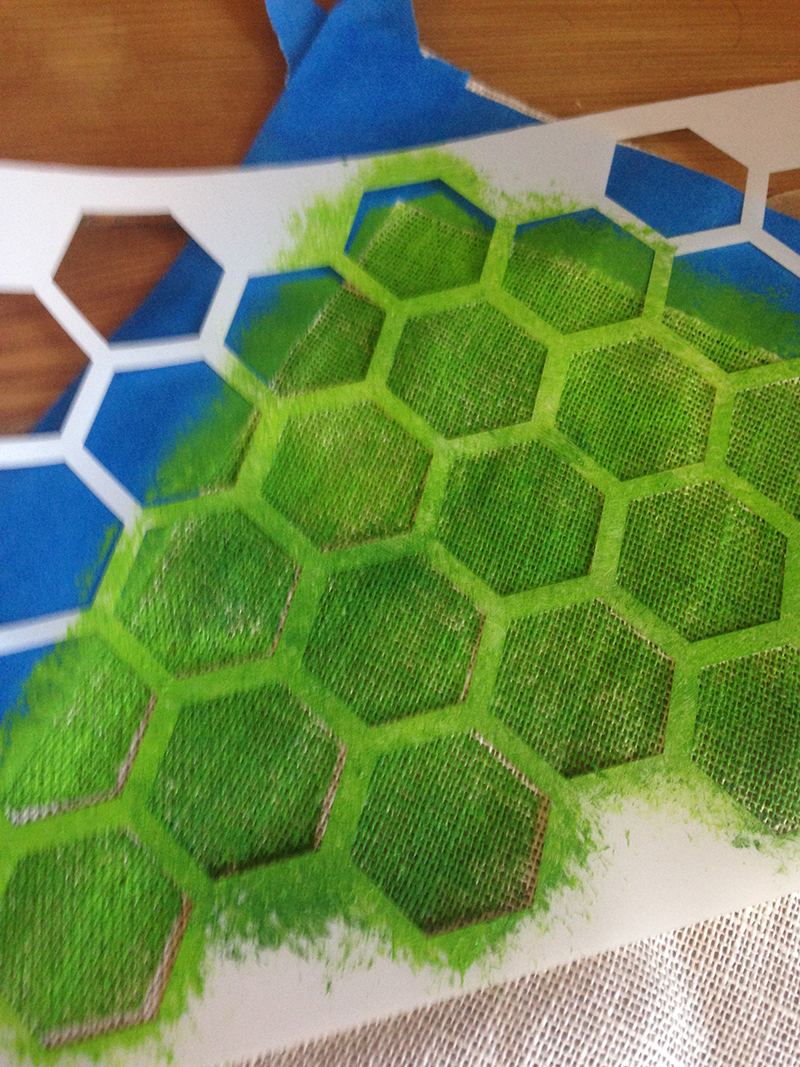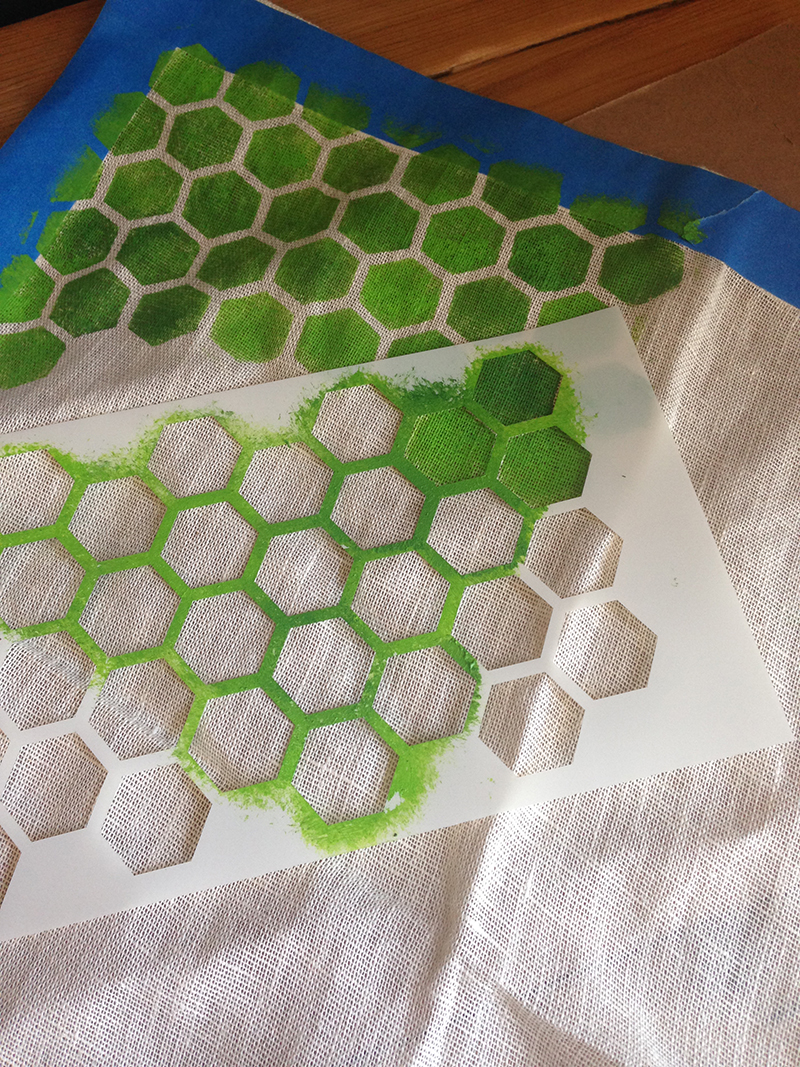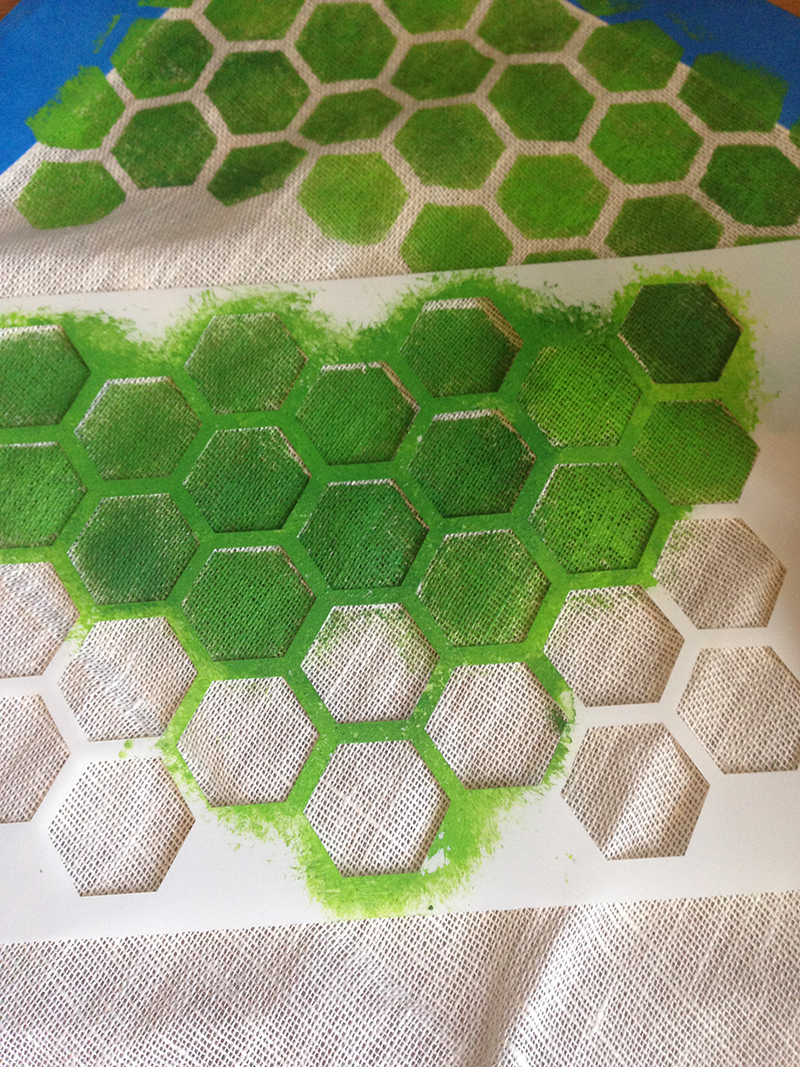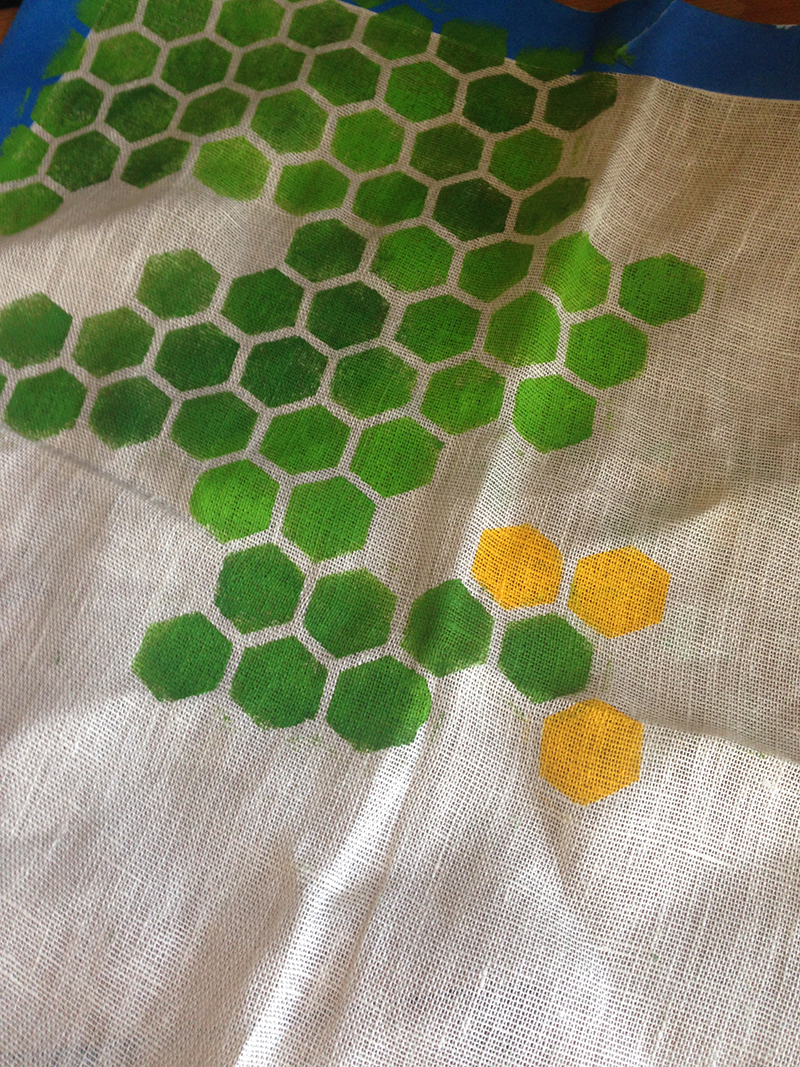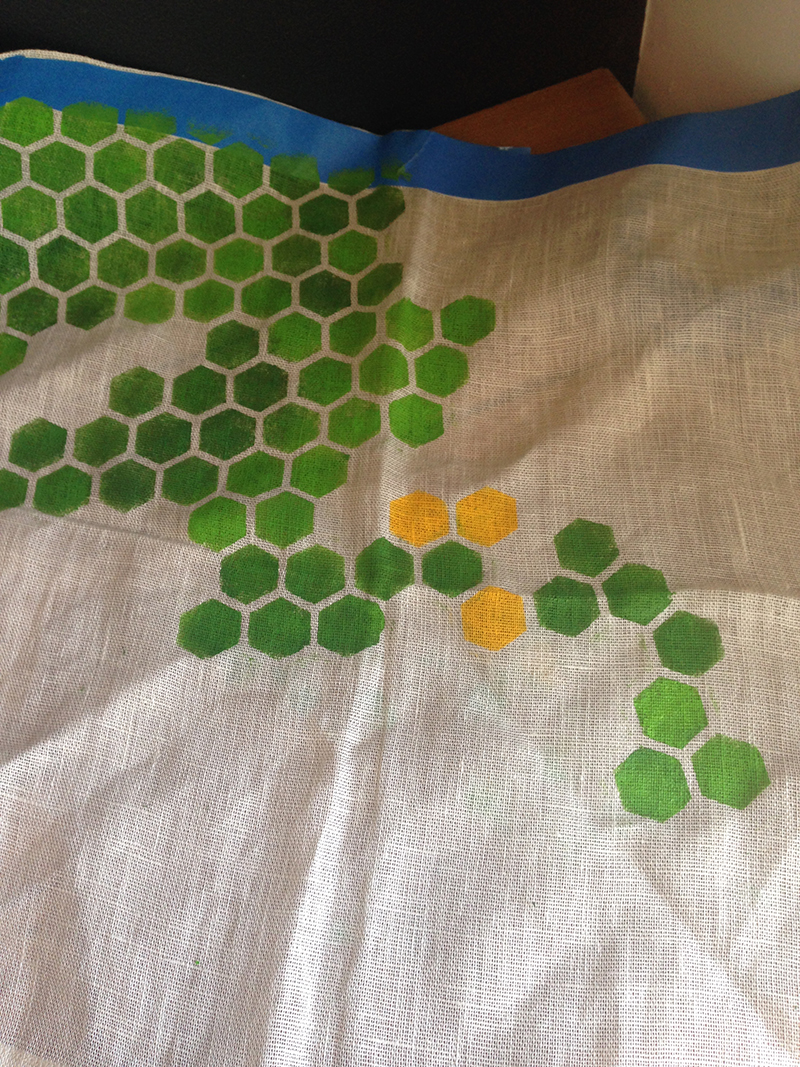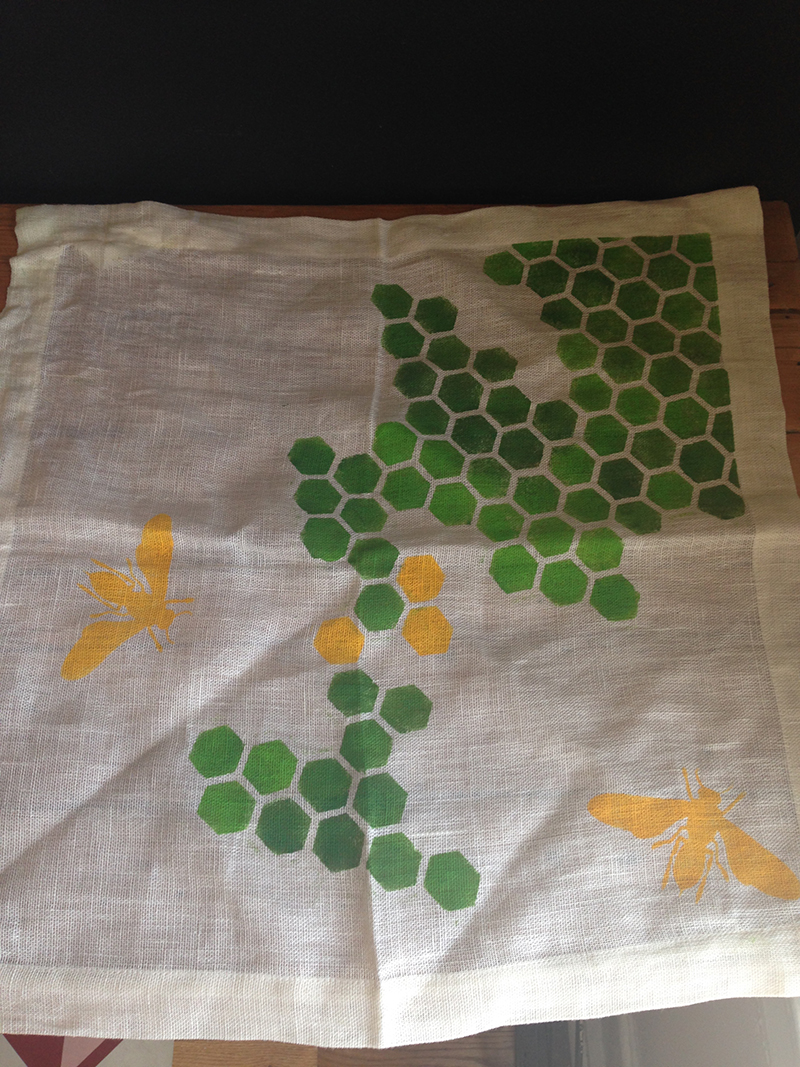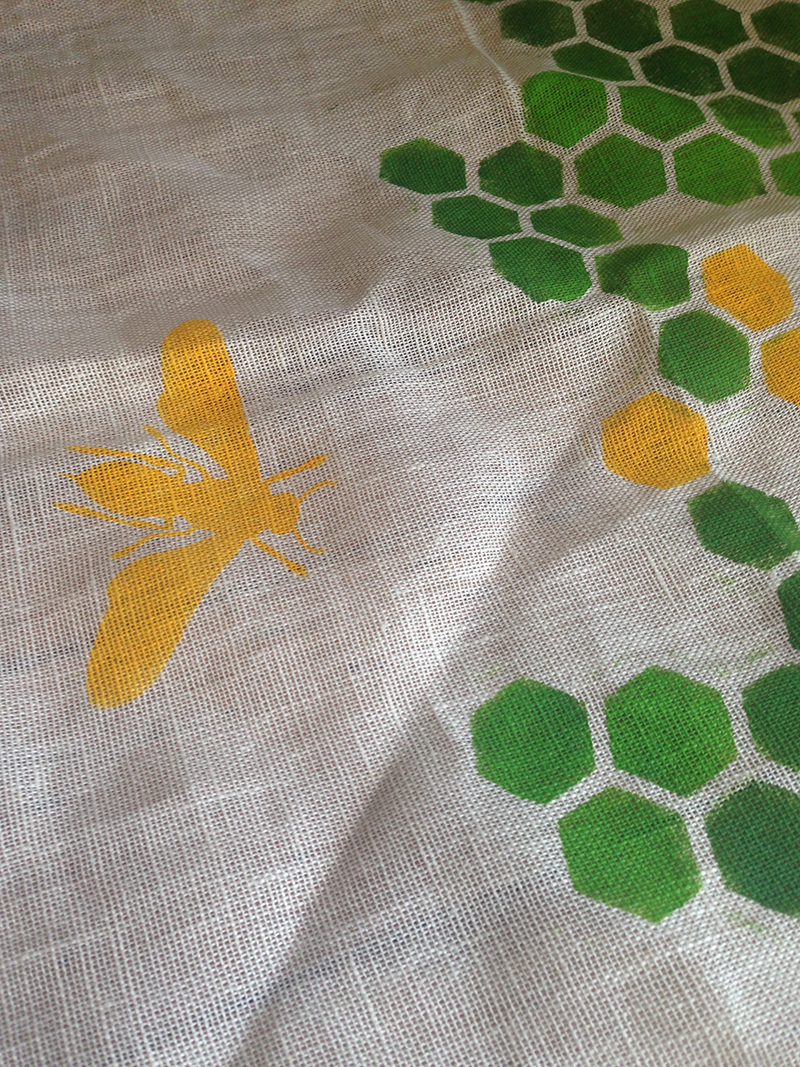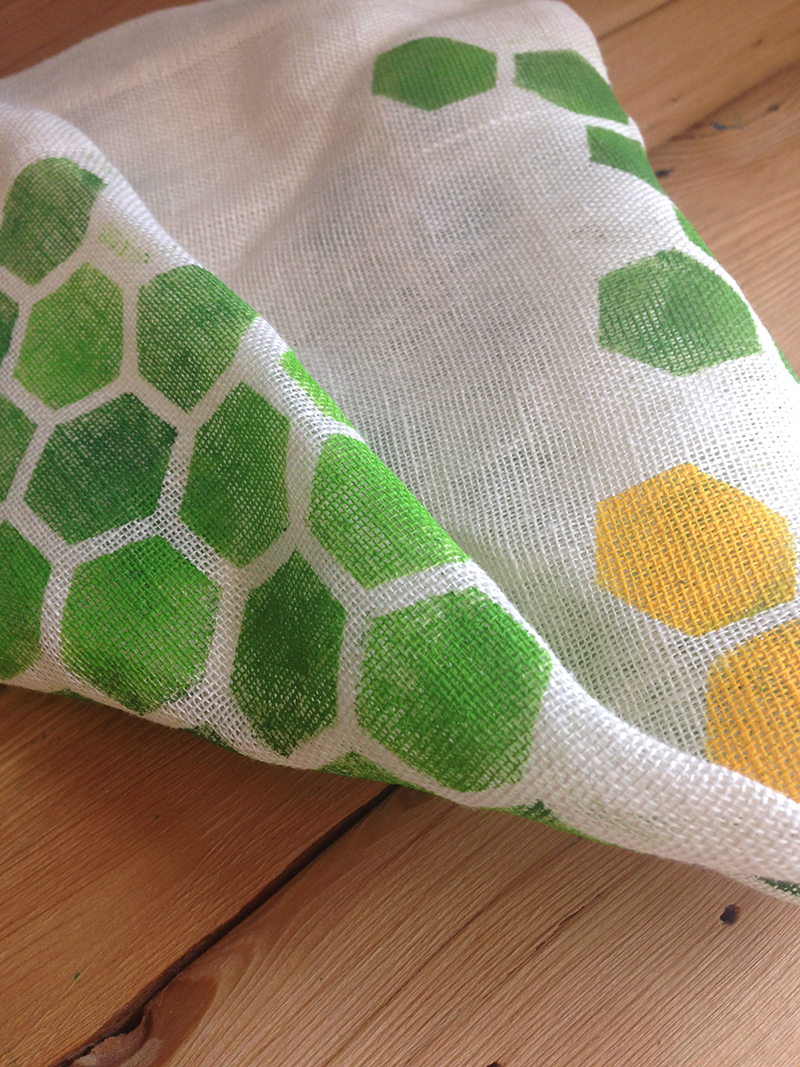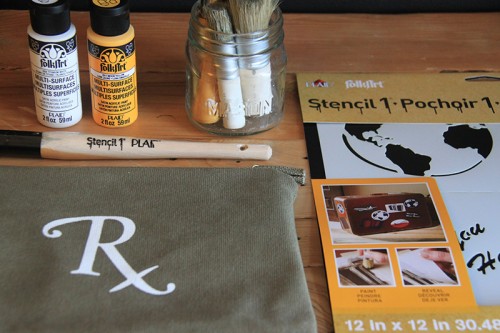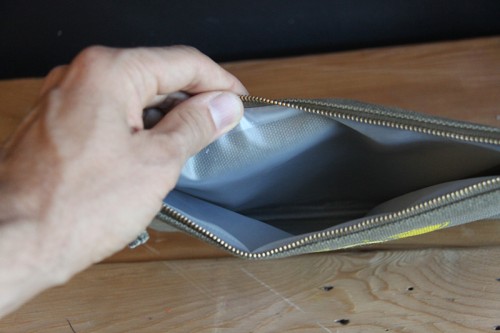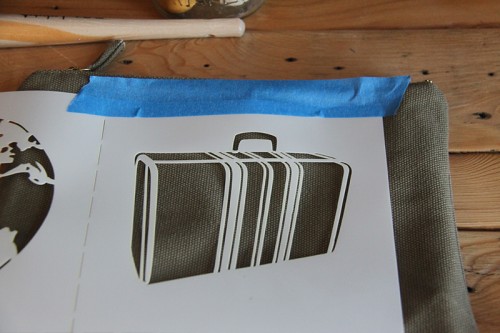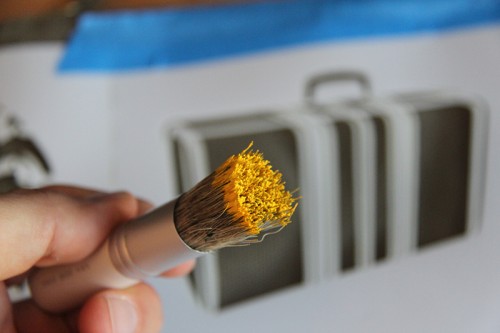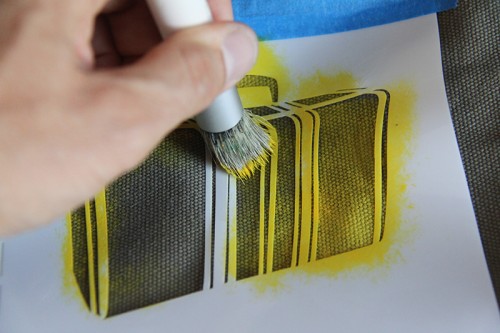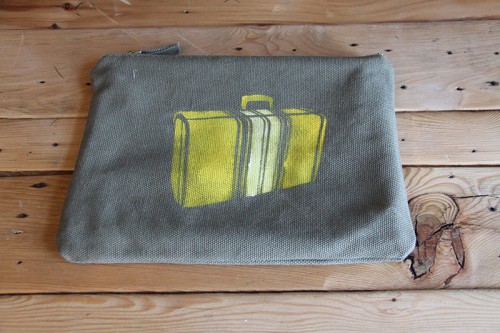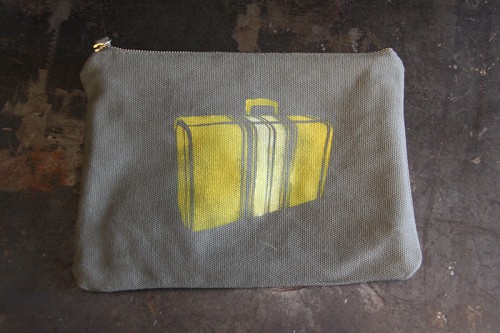This how to yields a maker look with a modern twist – Stenciled canvas art in an embroidery hoop. It also adds a bit of class to traditional Halloween decorations.
What you’ll need: Embroidery hoops, thin canvas, 6×6 Stencil1 skull set stencils, Stencil1 quatrafoil stencil, stencil brushes, scissors and hammer and nails if you hang your creations.
Step 1: To start, lay out your thin canvas on a flat surface.
Step 2: Using the quatrefoil pattern stencil from the Swallow Set, stencil the canvas with the pattern until the entire cloth is full. We used a lighter color so when we layer the skull over it, the skull pops.
Step 3: Once all four cloths are stenciled with the pattern and have fully dried, it’s time to stencil the skulls. Place the skull stencil in the very center of the cloth. Using black paint, stencil in the open areas of the skull stencil until it is completely filled. We went nice and dark, using an up and down stomping motion with our stencil brushes.
Step 4: Once the four skulls are done and have dried, you can easily place them in the embroidery hoops.
Step 5: Cut away or even tape back the excess fabric sticking outside the hoop and hang on you wall or door for all to see!
Share what you made with us at @stencil1
Extra credit –Go the distance and further embellish with embroidery!









